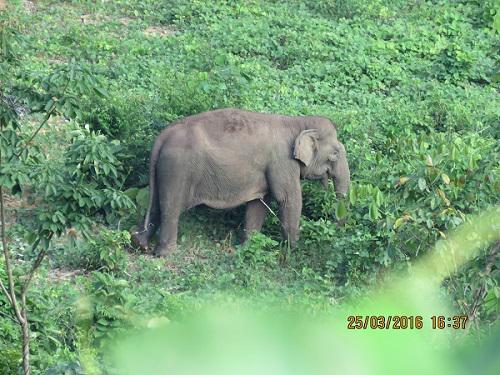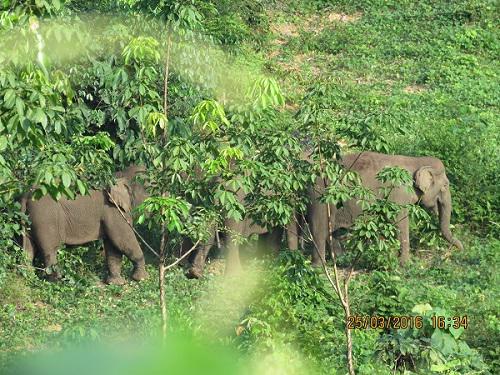Isabella Apriyana
To provide baseline population data of Sumatran elephant in Harapan Rainforest by employing advance genetic technology.

Female elephant Jenni roaming Harapan Rainforest.
Over the last century, the population size of the endemic Sumatran elephant (Elephas maximus sumatranus) decreased drastically due to forest conversion and poaching, making it one of the most critically endangered big mammals. In contrast to most areas of Sumatra, Harapan Rainforest (Hutan Harapan in Indonesian language, meaning “forest of hope”) still provides a comparatively large core habitat for elephants. Harapan Rainforest became the first forest restoration project in Indonesia when the government awarded two Ecosystem Restoration licenses covering the 98,555 ha area to PT Restorasi Ekosistem Konservasi (PT REKI) in 2007 and 2010. As soon as PT REKI noticed the presence of elephants in their concession area, this iconic animal was chosen as one of Hutan Harapan’s flagship species. However, very little is known about the remaining elephant populations in the area. The area has never been surveyed properly using scientific methods, therefore collecting baseline data of Sumatran elephant population in Harapan Rainforest is considered the mandatory first step to provide reliable information for conservation planning.

A herd of Sumatran elephants in Harapan Rainforest.
Elephant surveys in Sumatra’s jungle environment are extremely difficult, often resulting in limited or false information based on occasional sightings and guesswork. Considering these challenging preconditions, we will employ genetic approach. In brief, elephant individuals are identified by analyzing DNA from the non-invasively collected fecal samples. In combination with direct field observations and dung measurements, we will be able to provide detailed information on the conservation status of the resident elephants of Harapan Rainforest including sound estimates of population size, sex ratio, and age structure. The baseline data produced by this project will be crucial for designing effective management strategies and identifying threats to the population.
Fecal samples are collected by PT REKI conservation teams and genetic analysis is conducted at Eijkman Institute for Molecular Biology.